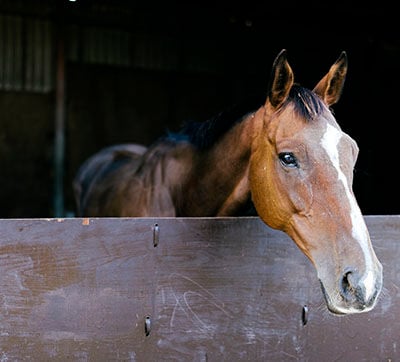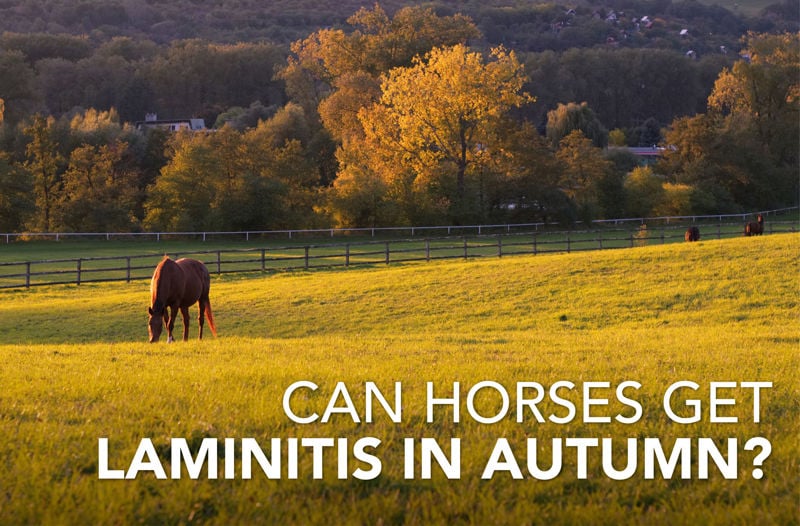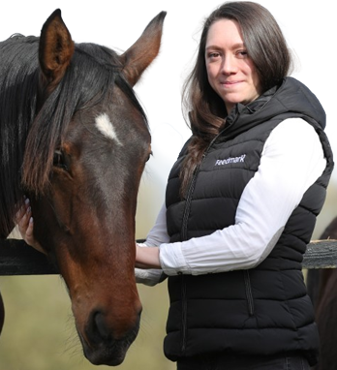It is well known by most horse owners that Springtime is a risk factor for laminitis, especially for horses and ponies suffering from issues with metabolic diseases, such Pituitary Pars Intermedia Disease (Cushing’s), Equine Metabolic Syndrome (EMS) and Insulin Resistance (IR). However, autumn can also cause a risk, as demonstrated in a recent study by Knoles et al. (2023). 374 ponies were monitored over a four-year period for the development of laminitis. Over the period of the study there were 43 cases of laminitis, 10 of which occurred in the autumn. This is further supported by an earlier study that found that compared to 111 cases of laminitis in the spring & summer, there were 65 in autumn and winter, with autumn cases of laminitis being the most likely to reoccur (de Laat et al. 2019). The authors suspected that this is likely due to grass containing high levels of non-structural carbohydrates (NSC) in the autumn, due to good daylight conditions and low overnight temperatures.
Why is autumn grass an issue?
Grass contains non-structural carbohydrates (NSC), which consists of both simple sugars and fructan. Simple sugars are produced via photosynthesis, a chemical reaction where carbon dioxide and water are converted into sugar and oxygen. To fuel this reaction, energy from the sun is absorbed by chlorophyll, the green pigment in plants. As sunlight is necessary for the reaction to take place, photosynthesis only occurs during daylight hours.
Photosynthesis

Any sugars that are not immediately used by the plant are converted into fructan, a storage carbohydrate which is stored in the stem of the plant. Overnight the plant breaks down the stored fructan to provide energy for growth. Any extra sugars not used at this time are stored in the lower stem (the 2 inches above soil level). However, if the temperature drops below 5°C growth does not occur (Hurtado-Uria et al. 2013), and so the sugar and fructan levels in the grass remain high (Watts, 2004). For this reason, sunny days followed by cold nights mean that sugar levels in grass are high, and they continue to rise if this weather continues for a period of time.
Ingestion of grass with higher levels of sugar increases the risk of laminitis, especially for horses and ponies with pre-existing metabolic issues.
How to reduce the risk of autumn laminitis
If you have a horse or pony prone to laminitis, it is suggested to not let them graze during at-risk times. This is when there have been sunny days, combined with low overnight temperatures (below 5°C), especially if this has continued for several days. Instead of grass turnout keep your horse or pony stabled, or even better allow them to have turnout onto a dry lot with alternative forage options instead of grass.

A balanced diet plays a crucial role in reducing the risk of laminitis in horses and ponies, especially those with a history of the condition. While there is no single feed or supplement that can entirely prevent laminitis, correct nutrition and careful management can significantly lower the chances of it recurring. Ensuring your horse or pony receives the right amount of calories and energy is essential for preventing unwanted weight gain and obesity, both of which can increase the risk of laminitis.
References
- Knowles, E.J., Elliott, J., Harris, P.A., Chang, Y.M. and Menzies‐Gow, N.J. (2023) ‘Predictors of laminitis development in a cohort of nonlaminitic ponies’, Equine Veterinary Journal, 55(1), pages 12-23.
- de Laat, M.A., Reiche, D.B., Sillence, M.N. and McGree, J.M. (2019) ‘Incidence and risk factors for recurrence of endocrinopathic laminitis in horses’, Journal of veterinary internal medicine, 33(3), pages 1473-1482.
- Hurtado-Uria, C., Hennessy, D., Shalloo, L., O'Connor, D. and Delaby, L. (2013) ‘Relationships between meteorological data and grass growth over time in the south of Ireland’, Irish Geography, 46(3), pages 175-201.
- Watts, K.A. (2004) ‘Forage and pasture management for laminitic horses’, Clinical techniques in equine practice, 3(1), pages 88-95.



